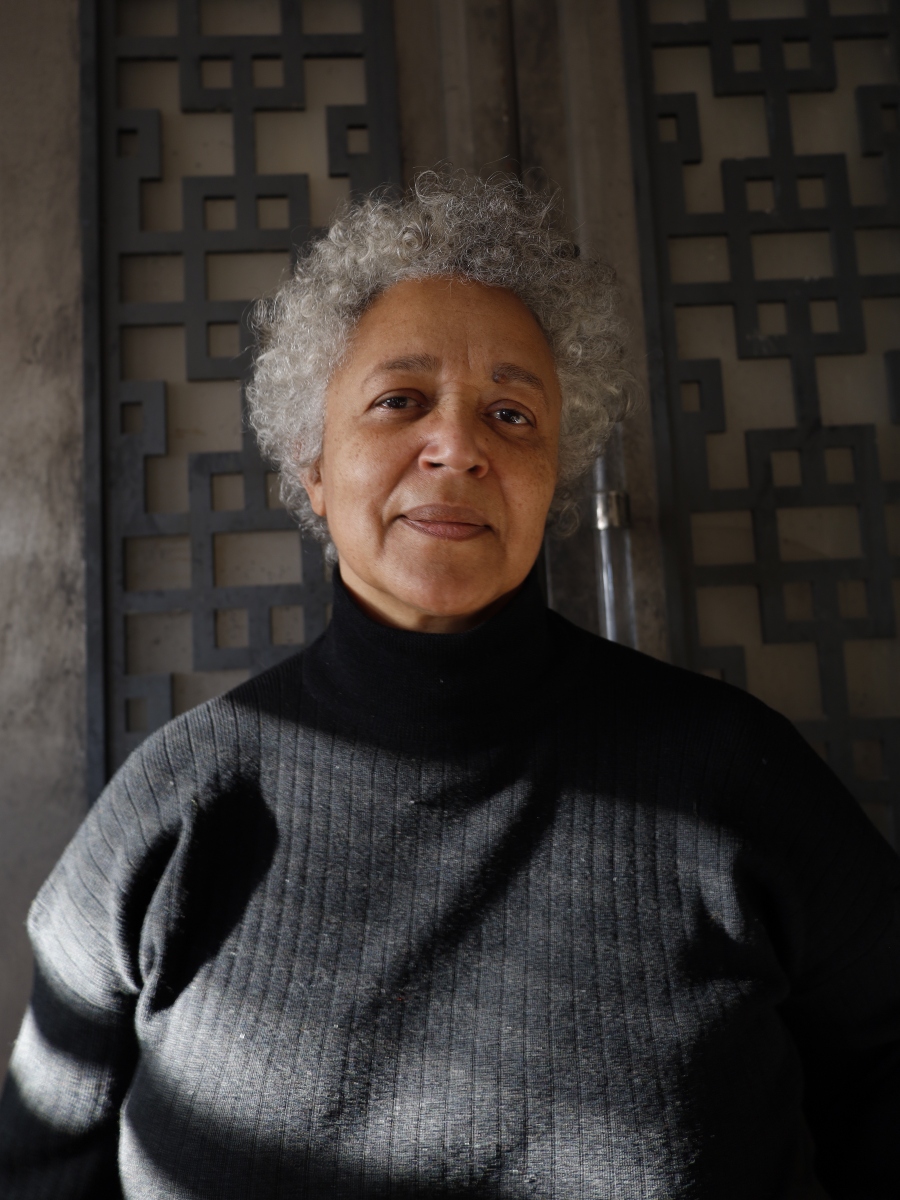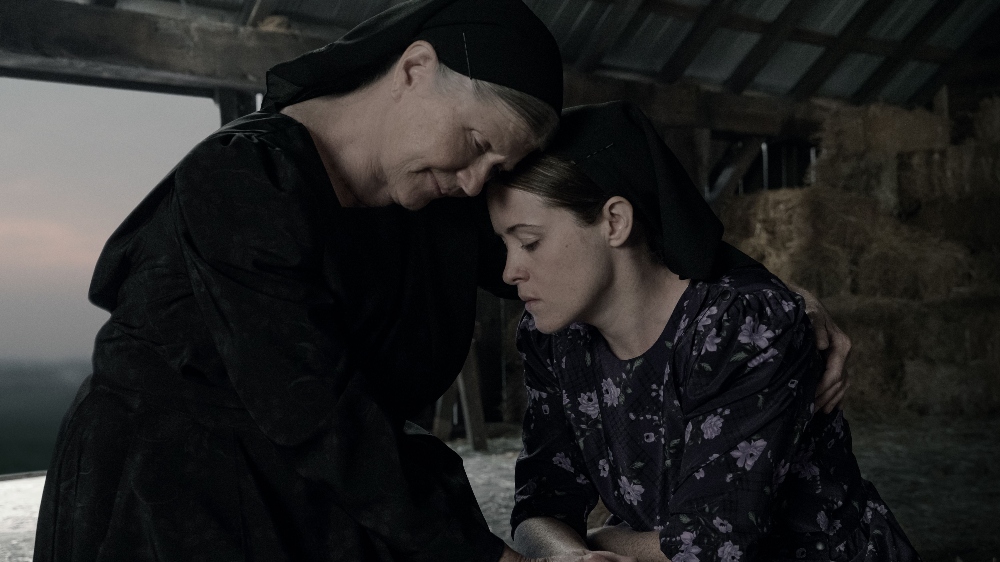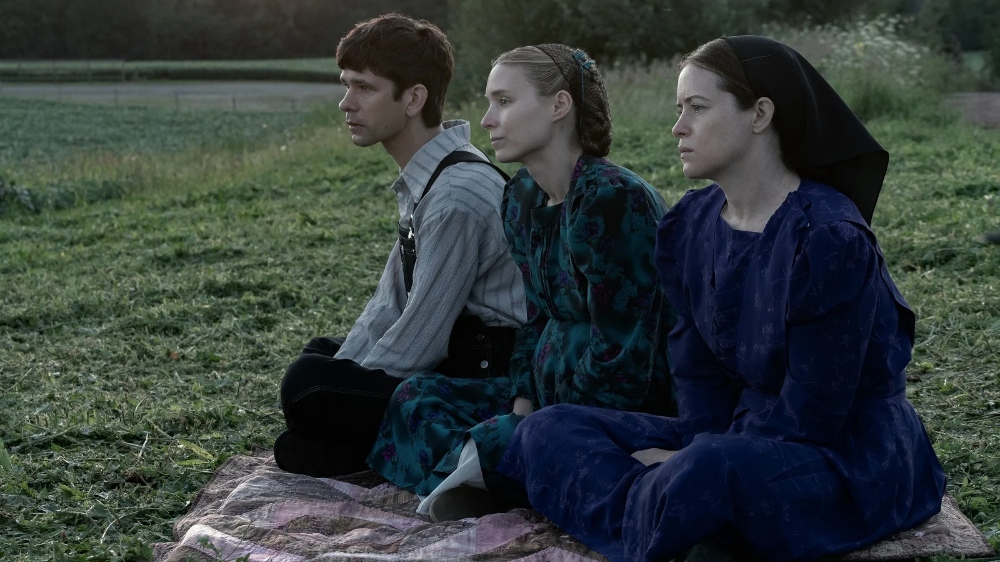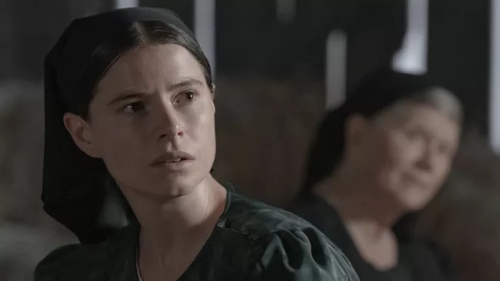It was clear to Below the Line when we reviewed Women Talking at the Telluride Film Festival that Sarah Polley‘s adaptation of Miriam Toews’ novel was destined to be one of the year’s best films, as we praised both its ensemble as well as its exquisite below-the-line aesthetic, which includes a spectacular score from Oscar winner Hildur Guðnadóttir and powerful cinematography from Polley’s longtime collaborator Luc Montpellier.
We also noted the realistic costume work from Costume Designer Quita Alfred, an artist who, like Toews herself, comes from Manitoba, Canada (Polley is from Ontario). Alfred has, for the most part, worked on TV series and TV movies of late, including American Gods and An American Girl: Saige Paints the Sky, so while she may not have the same profile within the feature world as some of her fellow awards contenders this season, her wonderful work on Polley’s intimate drama is evidence that she should.
Set almost entirely in a Mennonite barn in an undisclosed location in or about 2010, Women Talking follows a group of women, including Ona (Rooney Mara), Salome (Claire Foy), Mariche (Jessie Buckley), Agata (Judith Ivey), and Janz (Frances McDormand), who debate how to respond to the men in their religious community who routinely commit violent acts of sexual assault. Should they leave the colony to escape the abuse or stay as their beliefs command them? The story tackles difficult, charged subject matter and is suffused with strong technical production values.
Below the Line recently caught up with Quita Alfred, who explained how she became involved in Women Talking as well as how she designed costumes based on real-life clothing worn by her many Mennonite neighbors. Her work earned her a nomination from the Costume Designers Guild, so she’s already in good company.

Below the Line: How did you get involved with Women Talking and what was your reaction to being asked to work on the film?
Quita Alfred: Well, my head exploded. For even reasons you would not think of — I got an email from Lyn Lucibello, our Toronto producer. I had worked with her on costumes, but not as a designer, and I had not heard from her in ages. She said: ‘I was just sitting with Sarah Polley in my office.’ And that’s when my head exploded then because I had not heard from Sarah in over 30 years, when we worked on the TV series The Road to Avonlea, in which Sarah starred and I was an assistant costume designer to Madeline Stewart. I knew her from the fittings.
Anyway, Lyn said: ‘We were going through a list of costume designers in Toronto, your name came up, and Sarah said she knew [you].’ And then I had another small head explosion when I realized it was based on a Miriam Toews novel, and she is one of my favorite authors. She grew up about 45 minutes from where I am sitting right now in Manitoba. We were born the same year and are of the same age. When this all came together, I could not believe it.
And, by the way, these things continued throughout the project. The synchronicity of things that happened was incredible. We had to stop saying, ‘We are never going to have something like this again,’ and [we] started saying, ‘This is how we want it to be from now on.’ We enjoyed it, and it makes good movies.
BTL: Where did you start in terms of thinking about how to design these costumes? Did you go back to the novel itself, or did you do some other kind of research first?
Alfred: At the first Zoom with Sarah, I said: ‘You realize I’m in the heart of Mennonite country right now, right? I’m looking out of my window to my neighbor and he is Mennonite.’ Sarah did not even realize that, but I explained to her that I could get her all the research we needed — [it] was within an hour of my house. And so, Sarah and Lyn and Dede Gardner (one of our other producers) made [it] possible for me to start my research earlier than our prep time, while I was still in Manitoba.
Through that, I was able to make contacts in the Mennonite community. I started with my neighbors and friends. It is a very prominent culture here. I was already superficially familiar with the culture. I was introduced in a very Manitoba way to friends of friends of friends, and eventually, they opened the doors to me to the real history of the Mennonite community and [its] history in Manitoba, and then also in Southern Ontario.
I would have never had any of this if I had just approached it as “Oh, let me open some books and look at some pictures.” And in large part, it’s due to the graciousness of the Mennonite community. Throughout, these contacts and everyone went out of their way to help [and] provide things for me. They emptied their attics and garages. So I have real Mennonite plain dress in the film — both men’s and women’s. And I was also given guidance as to what sort of books to look at for the difference, what research rabbit holes to go down. My experience with them has always been [a] willingness to walk the talk — they help you as they say they will, and it was even more so here. I was afforded this wonderful opportunity to learn their culture in a way I had never before.

BTL: So were you using mostly real clothes? If it was a mixture, how did you strike that balance?
Alfred: We had both. The background actors you see are wearing real clothes worn by actual Mennonite women and men. I collected over 500 of them and I have them in storage now. As you know, we did not end up with as many men in the final cut of the film as we had originally planned for, but we had a lot of their clothes as well. And then we had women making overalls for the men — a very specific style of overall. I had Mennonite women making those for me, in the hundreds.
BTL: OK, so walk me through some of those. What were some of the colors you selected for the designs you made, and why those?
Alfred: Because I was guided in the way that the real traditional clothing (dresses and overalls) looked like, what we then did with my sewing room and the team of cutters and sewers is, [we] reverse-engineered some of the outfits. We basically began replicating some of these dresses. And because we could not add accouterments — no lace, no people in heels, right? — we had to differentiate everyone. We had, literally, a group of women talking for 104 minutes, and we had to differentiate them.
I divided the families into moods, reactions, and temperaments, essentially. That led me to then dividing them into colors, almost team colors in my mind. That is what I did [to begin with], to keep everyone straight in my mind. That is how we could keep track of these characters.
So, for example, the family that includes Ona and Agata, in my subjective reading of the novel, their reactions were more intellectual. Whereas the other family, which includes Mariche and Greta (Sheila McCarthy), reacted more instinctively than intellectually. Not that either is better or worse than the other, it’s just that this is how they were. So what came to me for the intellectuals were brighter, purer colors like royal blues and purple, and teal. Ona herself is a little less straightforward, so she, in my mind, came down to teals and versions of purples and blues. I saw for them leading lines and straight, repetitive patterns, almost like reliable patterns. Straightforward patterns.
The Lowens, the family where Mariche belonged, including the narrator Autje (Kate Hallett), had a different family history and mode of survival. It was [a] more natural, instinctual reaction. So this got us to survival, nature. So this gets you to green, brown, nature, rust. You will see that with those characters. Jessie Buckley’s dress is very simple — we had little to work with! But you’ll notice the difference in the bodice work. Also, her fabric spoke to me of troubled water and of murkiness, something under the surface that is not immediately evident, as opposed to the repetitive patterns of the other family.

BTL: Tell me about the fabrics. Aren’t most Mennonite garbs made of polyester? How does that translate into shooting a movie?
Alfred: Well, along the same lines, the fabrics spoke to how I saw the characters. The Lowens family included a particular member, Mejal (Michelle McLeod), who had the only dress that was not polyester. It was rayon. The reason she got that dress is because we found a piece of fabric we loved that was very simple, like her character.
The rest of it was polyester. As a costume designer you go: “Oh my god, polyester.” But I wanted it to be realistic to pay homage to the graciousness of the Mennonite community. I eventually learned to love the practicality of it. You put it in the washing machine and it came out exactly the same way — it’s polyester, where is it going to go?
The polyester makes sense for them. They don’t have time to wear pleats. It’s practical if you have 10 kids and are working across the house all day. Of course, there are religious-based reasons as well — the plain dress of these communities.
BTL: How did Sara and the cast react to the use of these fabrics?
Alfred: Naturally, they were supportive. But I got to the point where Sarah accused me of being a “method” acting designer. There were moments when I was rolling around in the mud in the dress during the shoot. The point was to understand the practicality and the why of the dresses, of the style, and of the fabric.
I ended up loving the fabric much faster than the world-renowned actresses, who it took me an extra second to convince to be prancing around 108-degree weather in these polyester garbs! They managed through it of course.
Also, because the characters spent most if not all of the film in one dress, we had many multiples of each for maintenance reasons. This was an additional challenge for my team — to replicate them exactly — and also for the actors themselves.

BTL: It seems to me like the below-the-line values of this film work in unison, including the washed-out cinematography and the production design of the barn. What was the collaboration like with your fellow craftspeople?
Alfred: It was magnificent. It’s not always like that in TV, which is sad to say. It was unlike any experience I had before. This was a collaboration from every level. I’ve never worked with producers who were this supportive. I have never worked with colleagues like Luc, our Director of Photography, and Peter Cosco, our Production Designer, who were as interested in the process of getting everything right between us. Early on, we spoke about the 75 percent desaturation that Luc was going to use. So not only did I have to divide the families into colors and patterns, I had to figure out which were going to survive Luc’s process. A lot of things changed very much once they were desaturated.
Peter had the same issue in the set design — someone put up curtains and they would look one color in the daylight and a completely different one once Luc did his magic. So we all stuck very close together. When we learned something about a color we shared it with each other. In the end, believe it or not, we even met with the editors and worked with them as well.
BTL: What is it like to be mentioned in the same vein as some of the industry’s most successful costume designers this award season?
Alfred: It’s very exciting. I’m so honored. I’m thrilled by it. It’s really exciting. And through all those conversations that have happened so far, I have met wonderful people [who] I hope to collaborate with. It really is such an honor and [I’m] quietly thrilled about it all.
Women Talking is now playing in U.S. theaters courtesy of MGM and United Artists Releasing.





